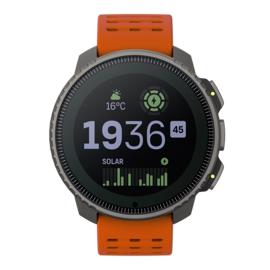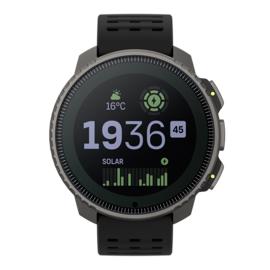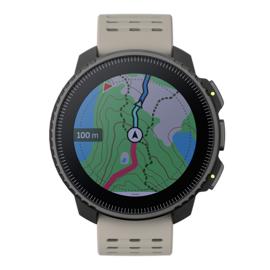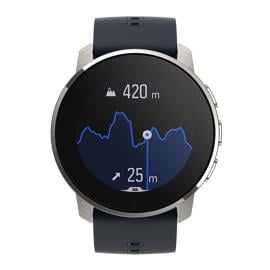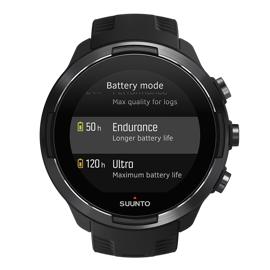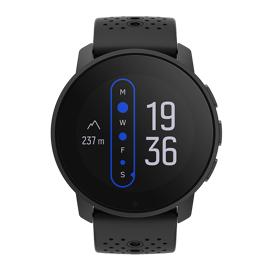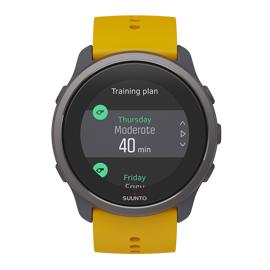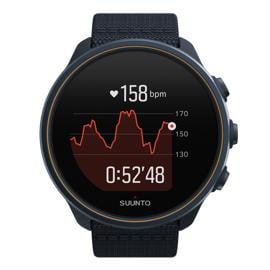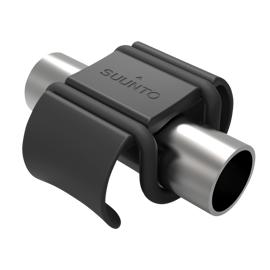In his previous post, Suunto ambassador, running coach and champion Stian Angermund broke down interval training and how to get started with it. “If you can run without stopping for 20 minutes, then you can start running intervals,” he said.
In this post, Stian gets more specific, providing three drills you can implement into your training regimen right now. Just keep in mind his advice in the previous post: “To ensure you do a quality interval training session it’s essential you have fully recovered from any earlier training sessions. If you have sore muscles or feel tired when you are about to start your interval training, then it’s not the right time. You should skip or postpone the planned interval session.”
Learn how to build your interval workouts using the Workout planner in Suunto app and follow the session in real time on your Suunto watch.
Three intervals sessions to get faster and stronger
By Stian Angermund
First things first, I recommend using your Suunto watch to guide your interval sessions. Your watch has a pulse ‘speedometer’ where you can see your running intensity. If you run intervals based on time duration, turn on your watch’s interval settings to help you through the session. You can contact your local gym for an anaerobic threshold and Vo2max test to find your intensity zones or use your Suunto to test your fitness.

Stian lives in Bergen, Norway.
Vo2MAX interval session
The goal of this drill is to improve your Vo2max.
For this session, you will run at a high intensity. The intensity should be around 90% of your maximum heart rate. At this intensity, you will feel some lactate while running.
Warm-up: Start with a 20 minute warm-up. Run 15 min easy, Then run one minute harder. Not as hard as your Vo2Max interval intensity. Run easy for one minute before repeating one minute of hard running. Run two minutes easy before starting the intervals. Now you are ready for the interval session.
The intervals: These should be run on trails and mainly uphill. If you have a long uphill, you can run the intervals uphill, then easy down, before continuing to run uphill again. If you don’t have a long uphill, you can make a loop, where you run a slack uphill during your interval, then a steep downhill down to start, before running the next interval.
Duration: The intervals during this session are four minutes each with a two minute recovery between them. After an interval, you’ll feel tired, but don’t stop or stand still - keep moving (active recovery). Do an easy jog or walk. If you stop, your legs will overflow with lactate, and it will be harder to run the next interval.
The number of intervals will depend on your individual level. If you haven’t run intervals before, you can start with four repetitions. If you are used to intervals and in good shape, you can do five or six intervals. Don’t push too much during the first interval. If you run your intervals as a loop, you can see the distance you cover during each four minute interval. The goal is to run the same distance in all the intervals, or maybe a few meters more for each interval. That means the first interval should feel easier than the following.
Cool down: After you have done the intervals, do a 10 to 15 minute easy run/jog. Drink and eat during your cooldown to optimize your recovery.
Anaerobic threshold interval session
The goal of this session is to improve your anaerobic threshold.
This session has a lower intensity than the Vo2max interval session. The intensity for this interval is around 82-87% of your maximum heart rate. The intensity should be under your anaerobic threshold. You should not feel any lactate during the session.
Warm-up: Start with a 20 minute warm-up. Run 15 min easy, then run one minute harder. But not as hard as your Vo2Max interval intensity. Run easy for one minute before repeating one minute of hard running. Run two minutes easy before starting the intervals.
The intervals: This session can be done with a short and long recovery time. You can make it a short recovery if you have a long uphill or a loop. You can also run the same hill, up and down. It is often one of the hardest parts of a trail race to start another ascent after running downhill.The benefit of running up and down is that you will improve this skill for your race.
Duration: The intervals are eight minutes long and the recovery between them is two minutes, or the time you will spend running down to start again. The number of intervals will depend on your fitness. Your legs will not be heavy from lactate, but fatigue from moving uphill. For the less experienced, start with three intervals. For the experienced runner, you can run up to six intervals. You must be able to run the intervals at the same pace. If you get too tired, then stop the session. Do not sprint at the end of the interval, like on your way to the finish line of a race. The best training is to be disciplined about the pace. Then you’ll get more benefits.
Cool down: After completing the intervals, do 10 to 15 minutes of easy running or jogging. Drink and eat during the cooldown to optimize your recovery.
Downhill interval session
The goal for this session is to improve your downhill running skills. In this session, we don’t focus on the intensity. We focus on technique and try to increase your confidence. The session should be short. The reason for this is twofold: to be able to maintain concentration and to cause less impact on your legs. If you lose concentration, it’s easier to twist your ankle or fall. And a short session will have less impact on your legs’ recovery and total training volume.
You need to find a hill to run down for your workout. If you have an upcoming race, it can be a good idea to try to find a descent that is similar to one in your race. It can be rocky, muddy, steep, technical and so on. The duration of the interval should be up to two minutes.
The intervals: Start with defining your finish line. Then you walk uphill at an easy pace to your start point. The first interval is to run at an easy pace down to your finish line. Then walk up again. On the second interval, you will try to beat your first time. Repeat this six to seven times, each time trying to be faster than the previous interval. This is a fun activity with friends, but do be careful not to overdo it or get injured.
Cool down: Run easy 5 to 10 minutes after the intervals.
To get coaching from Stian visit: https://stianangermund.com


